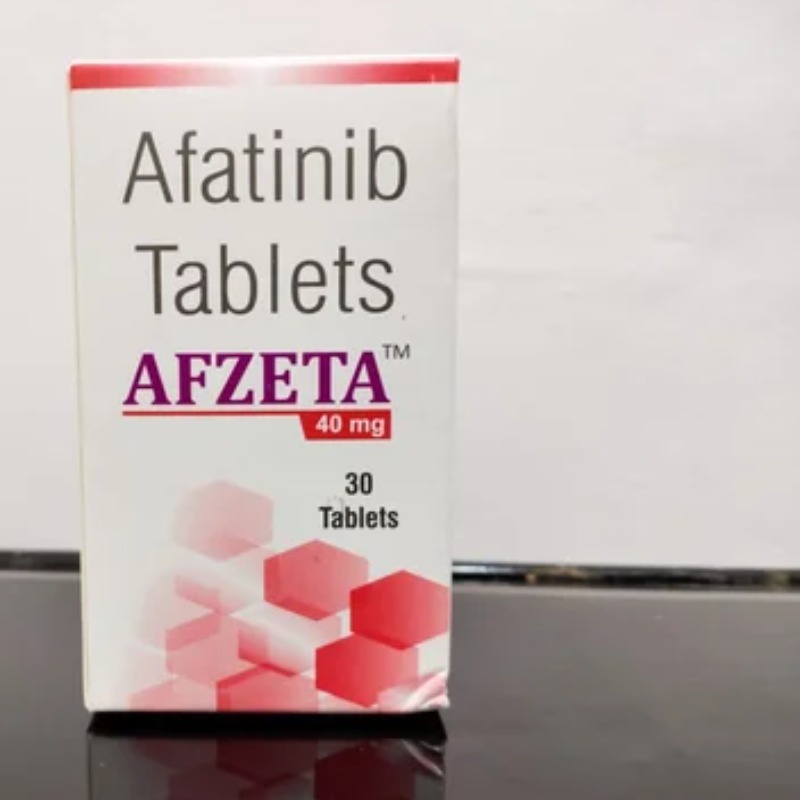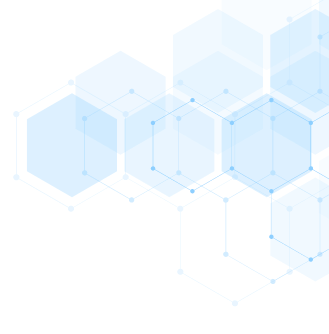DESCRIPTION
MECHANISM OF ACTION
• Potent and selective small-molecule inhibitor of the kinase domains of EGFR, HER2, and HER4, resulting in inhibition of autophosphorylation and inhibition of downstream ErbB signaling.
• Inhibition of the ErbB tyrosine kinases results in inhibition of critical mitogenic and antiapoptotic signals involved in
proliferation, growth, invasion/metastasis, angiogenesis, and response to chemotherapy and/or radiation therapy.
ABSORPTION
is on the order of 92%. Peak plasma drug levels are achieved in 2–5 hours after ingestion.
DISTRIBUTION
Extensive binding (95%) to plasma proteins. Steady-state drug levels are reached in approximately 8 days.
INDICATIONS
• FDA-approved as first-line treatment of metastatic non–small cell lung cancer (NSCLC) with EGFR exon 19 deletion or exon 21 (L858R) substitution mutations as detected by an FDA-approved test.
• FDA-approved for metastatic, squamous NSCLC progressing after platinum-based chemotherapy.
DOSAGE RANGE
Recommended dose is 40 mg/day PO.
DRUG INTERACTION 1
Phenytoin and other drugs that stimulate the liver microsomal CYP3A4 enzymes, including carbamazepine, rifampin,
phenobarbital, and St. John’s Wort—These drugs may increase the metabolism of afatinib, resulting in its inactivation
and lower effective drug levels.
DRUG INTERACTION 2
Drugs that inhibit the liver microsomal CYP3A4 enzymes, including ketoconazole, itraconazole, erythromycin, and clarithromycin—These drugs may decrease the metabolism of afatinib, resulting in increased drug levels and potentially increased toxicity.
DRUG INTERACTION 3
Warfarin—Patients receiving warfarin should be closely monitored for alterations in their clotting parameters (PT and INR) and/or bleeding, as afatinib may inhibit the metabolism of warfarin by the liver P450 system. Dose of warfarin may require careful adjustment in the presence of afatinib therapy.
SPECIAL CONSIDERATIONS
• Dose reduction is not recommended in patients with mild or moderate hepatic impairment. However, afatinib has not been studied in patients with severe hepatic dysfunction and should be used with caution in this setting.
• Closely monitor patients for new or progressive pulmonary symptoms, including cough, dyspnea, and fever. Afatinib therapy should be interrupted pending further
diagnostic evaluation.
• In patients who develop a skin rash, topical antibiotics such as Cleocin (clindamycin) gel or erythromycin cream/gel or oral clindamycin, oral doxycycline, or oral minocycline may help.
• Patients should be warned to avoid sunlight exposure.
• Closely monitor in patients with a history of keratitis, ulcerative keratitis, or severe dry eye and in those who wear contact lenses.
• Avoid Seville oranges, starfruit, pomelos, grapefruit, and grapefruit juice while on afatinib therapy.
• Pregnancy category D. Breastfeeding should be avoided
TOXICITY 1.
Skin toxicity in the form of rash, erythema, and acneiform skin rash occurs in 90% of patients. Pruritus, dry skin, and nail bed changes are also observed. Grade 3 skin toxicity occurs in nearly 20% of patients, with bullous, blistering, and exfoliating lesions occurring rarely
TOXICITY 2
Diarrhea is the most common GI toxicity. Mild nausea/vomiting and mucositis
TOXICITY 3
Pulmonary toxicity in the form of ILD manifested by increased cough, dyspnea, fever, and pulmonary infiltrates. Observed in 1.5% of patients, and incidence appears to be higher in Asian patients.
TOXICITY 4
Hepatic toxicity with mild to moderate elevations in serum transaminases. Usually transient and clinically asymptomatic.
TOXICITY 5
Fatigue and anorexia.
TOXICITY 6
Keratitis presenting as acute eye inflammation, lacrimation, light sensitivity, blurred vision, eye pain, and/or red eye.
SPECIFICATION


Login To Comment